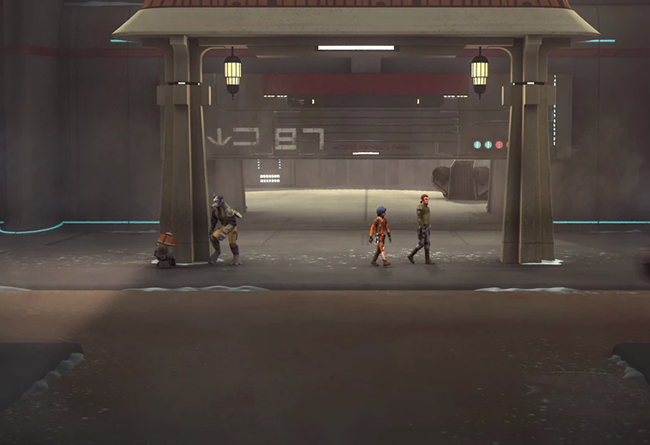Name: Bothawui
Type: Terrestrial
Temperature: Temperate
Atmosphere: Type I (breathable)
Hydrosphere: Moderate
Gravity: Standard
Terrain: Plains, mountains, oceans, forests, urban
Length of Day: 27 standard hours
Length of Year: 351 local days
Sapient Species: Bothans (N), humans, various aliens
Starport: Standard Class
Population: 2.5 Billion
Planet Function: Homeworld, espionage, trade
Government: Imperial consul-general with Bothan Council
Tech Level: Space
Trade Routes: Bothan Run, Kaaga Run, Manda Merchant Route, Reena Trade Route
Major Exports: Mid Technology, high technology, information
Major Imports: Mid Technology, high technology, information
Settlements: Blee’starn, Breil, Covepi’starn, Dreel’starn, Drev’starn (capital), Fevye’starn, Fey’starn, Gna She’starn, Gre Shev’starn, Holm’starn, Kolme’starn, Lev’starn, Liah’starn, Mesdri’starn, Navshe’starn, Odve’starn, Rhan’starn, Sal Vhe’starn, Shevre’starn, Urval’starn, Velhom’starn
Points of Interest: Tiaran’grast, Bothawui Shipyards, Combined Clans Center Building, Exoticalia Pet Emporium, Imperial consulate, Intergalactic Trade Mission, Merchant’s Square, Mesa 291
Flora: —
Fauna: Ak, Bok, Bothan sky dragon, Ganjuko, Halkra, Krak’jya, Krusk, Radark, Ral, Salar, Sez, Skalworm, Skar’kla
System Data
Region: Mid Rim
Sector: Bothan Sector
System Name: Both System
Star Name: Both
Star Type: Yellow
Background: Bothawui was a cosmopolitan planet, located in the center of Bothan Space in the Mid Rim. It was the homeworld of the Bothan race as well as a major hub for information trafficking. It was also the center of the Bothan Spynet, widely agreed upon to be the best network of information gathering in the galaxy. The Imperial name for the planet was Bothawui Proper.
Bothawui was the fourth planet from the star Both in the Both system of the Mid Rim region of the galaxy and was also within the region known as the Slice. It was situated at the junction of four major hyperlanes, including the Bothan Run, the Kaaga Run, the Reena Trade Route, and the Manda Merchant Route. Due to a slight wobble in its axial plain, Bothawui experienced numerous small ice ages, which expanded and retracted across the planet’s higher latitudes in seventy-year cycles. Bothawui was also affected by the destruction of the third planet in its system.
A terrestrial world orbited by three moons, Bothawui had a day that lasted 27 standard hours and a year that consisted of 351 local days. The planet was 9,000 kilometers in diameter and possessed a breathable atmosphere, standard gravity, a temperate climate, and a moderate hydrosphere. Bothawui was a bright blue-green in color and its terrain included urban areas, rich equatorial forests, large polar ice caps, many rugged mountain ranges, and grassy savannas that spanned the areas between rocky glacier fields. Bothawui’s mountains and ridges were separated by deep, wide valleys that were inhabited by dangerous wildlife.
Due to the presence of mountainous terrain, large tracts of wilderness on Bothawui remained undeveloped and devoid of settlements. Snow covered mountain tops on Bothawui, and as a result of cyclical ice ages, large areas of land on the world would be covered by ice sheets for decades, transforming savannas into rocky wastelands. Krak’jyas dominated Bothawui’s animal life, skar’klas were native to the world’s higher elevations, and ganjukos lived throughout the ice sheets of Bothawui’s arctic wastelands.
A major trade world, Bothawui was the center of the trade of technology in its sector and was the home of many trade houses and megacorporations while also boasting strong shipping, communication, and transportation industries. The industrial center and Bothan colony of Kothlis, which was only a few light-years away from Bothawui, supported Bothawui’s technology trade. Annual operating taxes on Bothawui were very low, ranging from AurebeshSans-Serif credit.png8,000 for small businesses to more than AurebeshSans-Serif credit.png250,000 for large manufacturing facilities. Bothawui’s tax rates, combined with minimal bureaucratic regulations, enticed many galactic concerns into maintaining satellite offices on the planet, and establishing a new business on Bothawui was a simple process.
Assassinations, espionage, and sabotage were as commonplace on Bothawui as debates and typical legislation were on other worlds, and the Bothan Spynet developed into the foremost information-gathering network in the galaxy due to the suspicious and treacherous nature of life on Bothawui. Espionage represented an unofficial industry on Bothawui, with spies from industries, governments, trade organizations, and crime lords traveling to the world to collect intelligence for their employers. Bothawui was considered an industrial world and possessed a reputation as a neutral ground for trade arrangements, diplomatic negotiations, and information-gathering operations.
Bothawui was governed by the Bothan Council, in which 18 council members represented the nation states of Bothawui. The Bothan Council was based on Bothawui along with various ministries that regulated commerce and government in Bothawui’s colonies. On Bothawui, strict policies restricted the use and ownership of lethal weapons, and special permits issued by the Bothan Council were required to possess blasters or explosive ordinance. Bothawui lacked an independent navy, but possessed advanced planetary shields and a large, well-equipped civil defense army. The defense grid featured numerous backup systems and redundancies.
Bothawui became the capital of the Bothan sector. The planet was home to grain farms and was mined for indigenous ores such as lidium.





